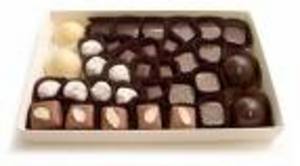As a toddler is growing his motor skills develop from the center of his body to the outer extremities. This is why babies sit-up, then crawl, then walk…each part of the body learns its role. The trunk for sitting up, the legs, arms, and trunk for crawling, and then the feet are added for walking. Once they have mastered these skills, a “toddler” can start working on his fine motor skills, which is his hands.
Even watching the development of a baby’s hands you can see how the development moves from the inside out. An infant grasps with his fist, then his thumb and hand, and then his fingers. Some toddlers have more difficulty developing fine motor skills, so here is a guide with some exercises for your use. Most fine motor skills also require some extent of hand eye coordination, so it takes time, you are also halping to develop that. A toddler that continues to have problems “may” have vision problems.
One important thing while working with fine motor skills is if you are using small objects, do NOT leave your toddler unsupervised, as this could pose choking hazards.
Peg board games (IQ Testers- can be found at places like Cracker Barrel). If your baby puts everything in his mouth, this is not a good exercise right now. While your toddler plays with the pegs allow him to put them in holes and take them out, point to a hole and see if he can get the peg in that hole. Often these are found in restaurants, so it is a great activity while waiting for your meal.
Allow your child (under your supervision) to draw and color with crayons, chalk, or small pencils. The picture may not be much, but they are toning the little muscles in those hands. Also, this is a great time to determine whether your child is right or left handed. Do not force your child one way or the other, let them work that out.
Buy a big plump melon and a melon baller (kitchen ware) and let your child help you ball the melon. The baller is a utensil with a rounded half circle on the end. You manipulate your by holding it between your thumb and pointer finger and twisting your wrist upwards. This activity works on the muscles, can be a great bonding exercise, and has yummy rewards!
Find a pair of plastic kitchen tongs ( may be available in child’s dr’s kits also) and allow your child to pick up objects with the tongs. Once they have mastered the skill of picking stuff up, then you can have them use the tongs to pick objects up and drop them into a dish. This activity is best done while sitting and is much safer.
Using play doh or even pieces of paper, show your child how to roll the chosen tool in the palms of his hands. When he accomplishes this, try showing how to roll a ball between the fingers. As mentioned above, the fingers are the last part of the hand to develop, so don’t expect your child to master this too quickly.
Get a thin straw and some large noodles (ziti works well) and have your child string the noodles onto the straw. This exercise can pave the way for a preschool child task of stringing cheerios or Fruit Loops onto a string and waking necklaces. You can also color the noodles in food dye and after your child puts them on the straw, you can put the straw on a piece of yarn and make a stiffer necklace or decorations for holidays.
Place cards (like those from the game Memory) or coins on a hard surface. Allow your toddler to slide them around, grasp (or attempt to grasp), and flip over the items. This can be difficult and make take some time to master.
Finger Painting!! This one is pretty self explanatory. To add a fun twist and make this a good option for toddlers, try using pudding. They can make beautiful pieces of art and lick their yummy fingers at the same time!
Collect your change up from around the house and buy your toddler a piggy bank. Allow your child to stick the coins into the piggy bank. Never leave them unattended with coins.
Purchase some foam puzzles and allow your child to manipulate the pieces and put them together. This is a great time to teach numbers, letters, and shapes if you can purchase puzzles that identify those items. Foam puzzles can be chewed apart and choked on, so keep these away until you are working with your child.
As your child masters different skills, you can build on these exercises to make them tougher. These exercises will eventually prepare a child for writing, eating with a spoon and form, using scissors. Most children take up to five years to fully develop their fine motor skills. During this time activites and exercises are great to develop these skills and they can also provide great bonding experiences for mom, dad, and child.

